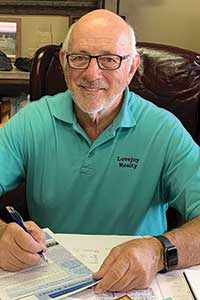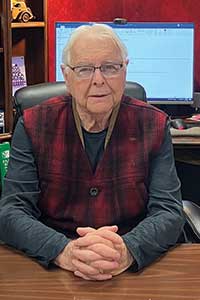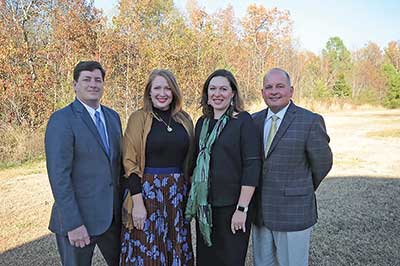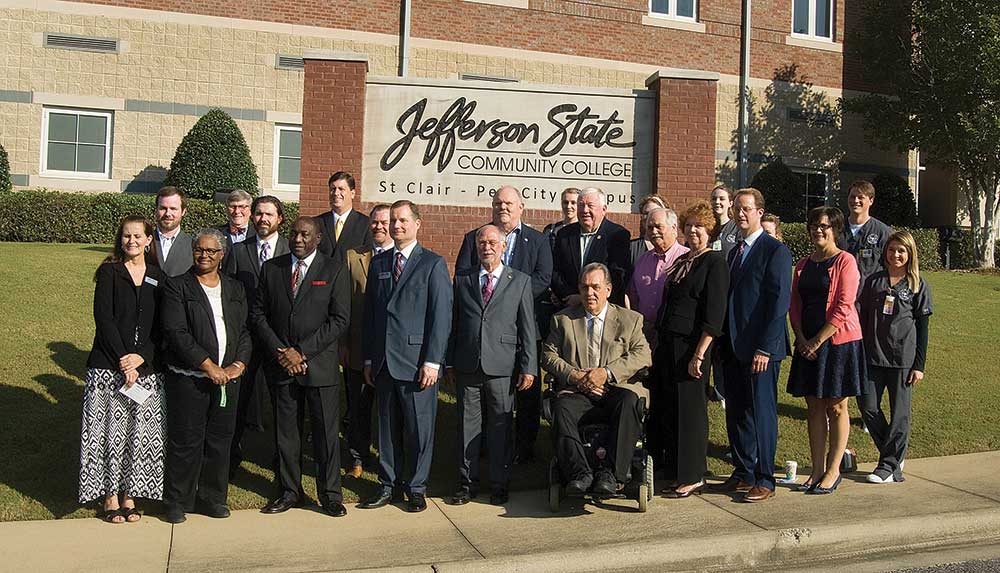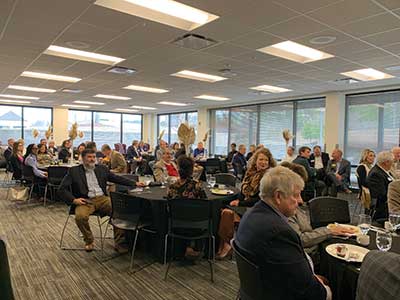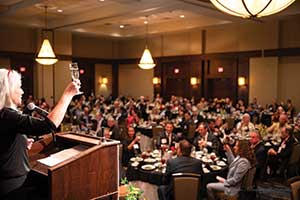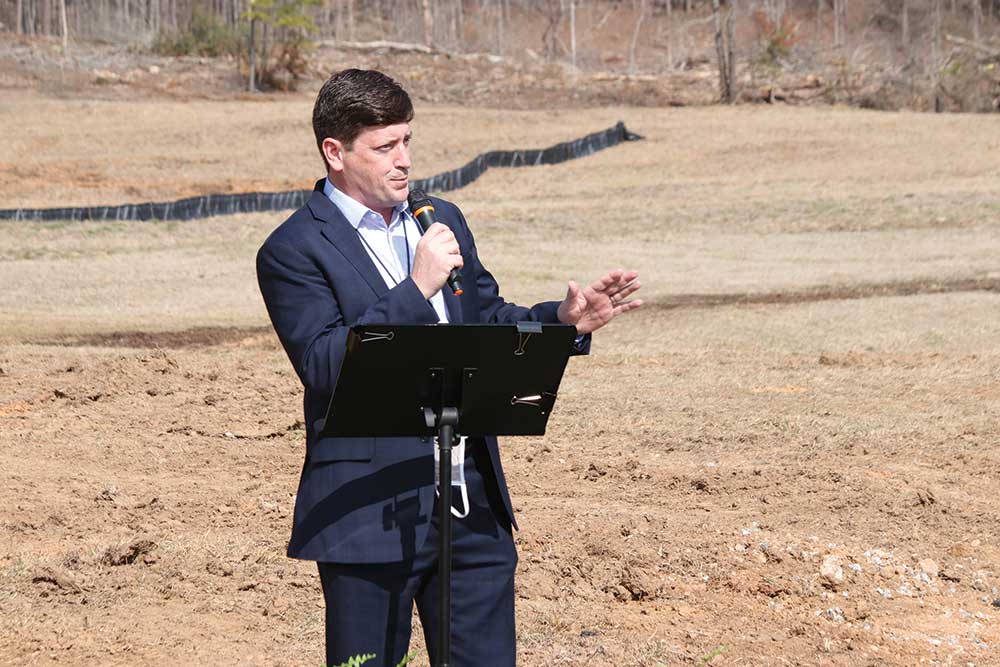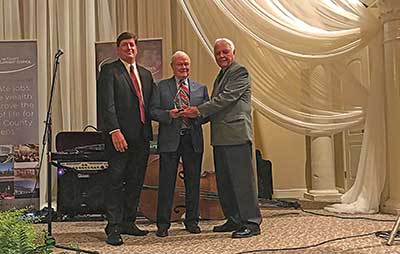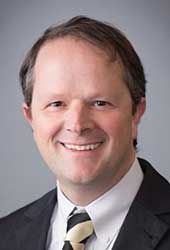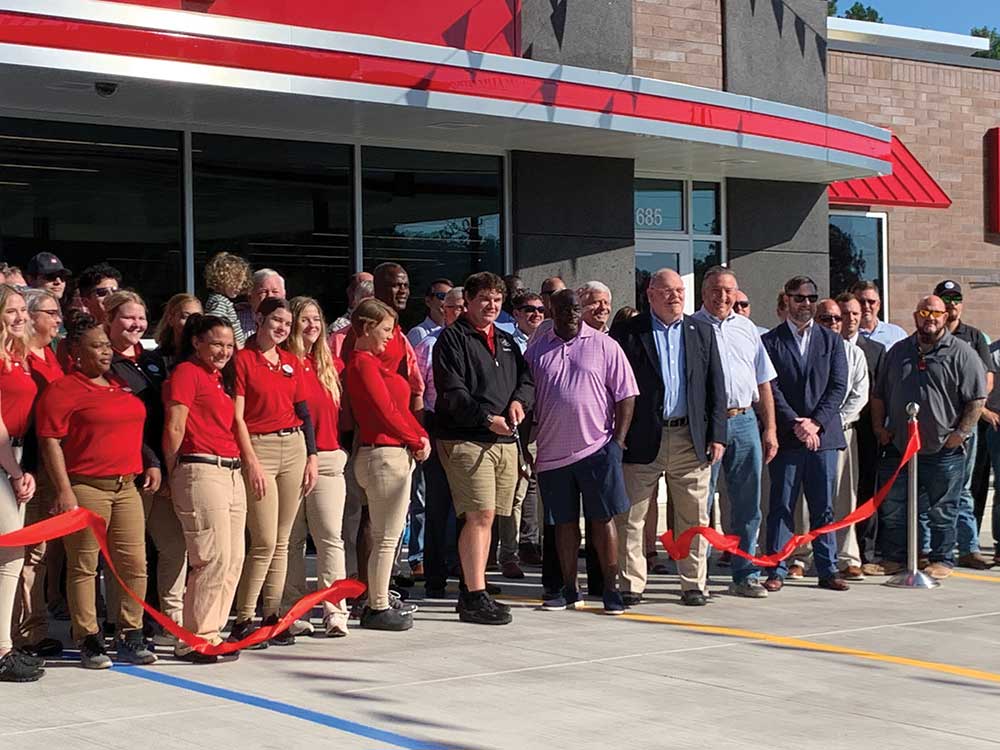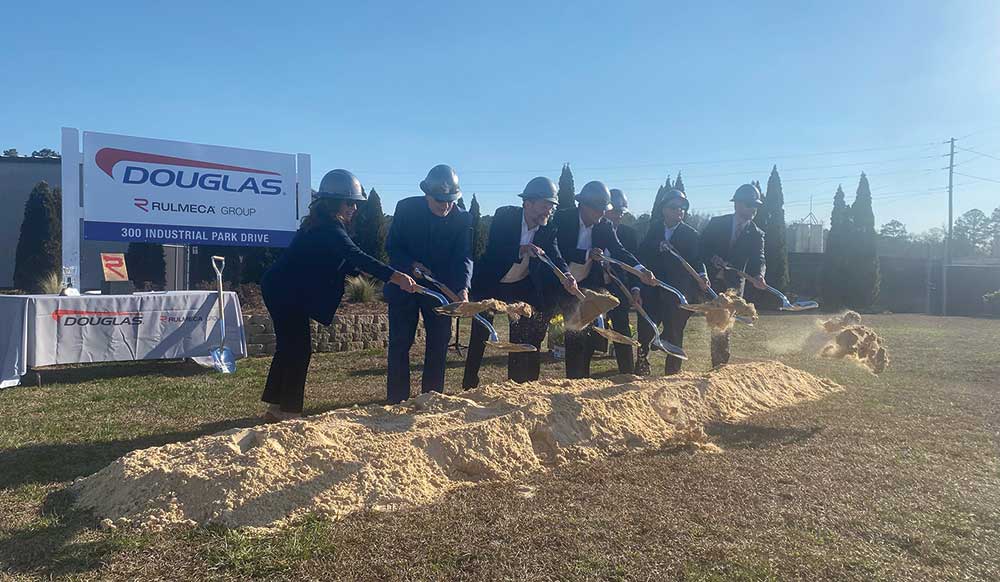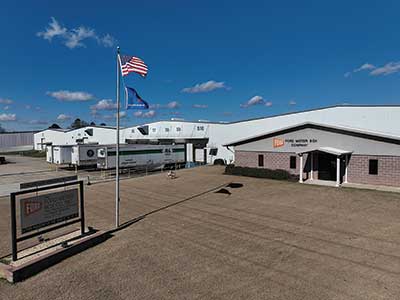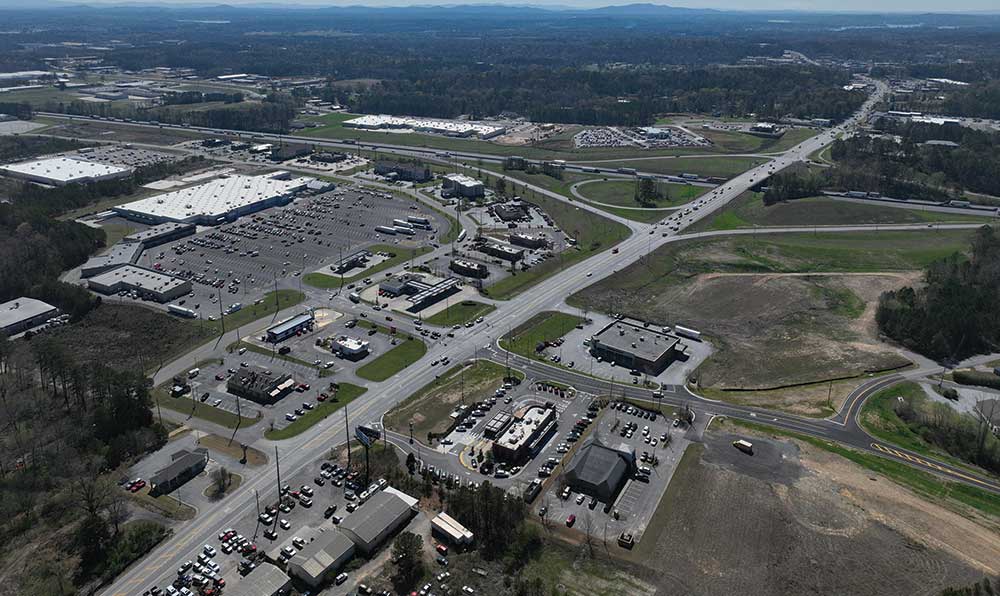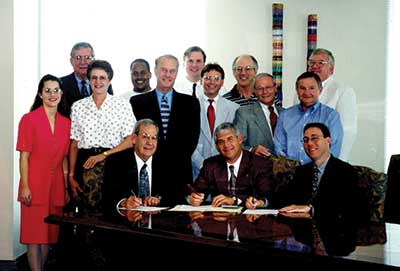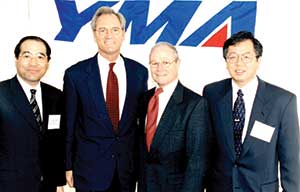Story by Carol Pappas
Discover Photo Archives
Twenty five years. Three chairmen of the board. One goal.
In 1999, the newly formed St. Clair County Economic Development Council charted a course where no one really knew exactly where it would lead. But they had an idea that if they all worked together, good things would follow.
The sailing wasn’t always smooth, but they stayed the course – through economic good times and downturns, through political administrations and leadership changes. Through it all, their North Star was working together.
The launch
Creation of the EDC “pulled the whole county together,” said Tommy Bowers, who served as the first chairman of the board. “We worked together as a team and supported each other’s prospects.”
When there was a ribbon cutting or a groundbreaking in one area, the rest of the county’s communities showed up in support. It was the premise upon which EDC was built – what is good for one is good for all.
Bowers recalled that the idea of a countywide economic development effort first arose out of the Pell City Industrial Development Board when members Bob Barnett and Ray Cox of Metro Bank proffered the notion that bringing the county together made sense. “They were instrumental in bringing the whole county thing in.”
Every good plan starts with an architect, so they brought former county attorney Bill Weathington in to set up the structure. “A lot of the credit goes to him,” Bowers said.
Because of the success that followed, Alabama Power, long known for its economic development prowess, “used us as an example of how industrial recruiting should work,” he said. “And it wasn’t just county cooperation, it was regional.”
Case in point: Honda Manufacturing of Alabama. Bowers, Commission Chairman Stan Batemon and EDC Board Member Lyman Lovejoy were part of the team that brought the automobile manufacturer to Lincoln in Talladega County. The team also included Calhoun, Talladega, Etowah and Jefferson counties.
In a yearlong, highly secret process under the code name, “Bingo,” the project almost went to St. Clair, but unionization concerns along the I-59 corridor in Etowah steered company officials away from the Steele site.
They considered the Pell City airport property for a time, and they put together a presentation that included relocating the airport.
Then, they looked at the Lincoln site, and a tree may have helped swing the final deal. One of the Japanese representatives “fell in love” with a tree on the property, and it helped sway the decision to that property, Bowers said. Before construction of the plant, they even built a fence around the tree and its root system to protect and preserve it.
At the time, the team didn’t know the identity of the recruiting target, although they eventually guessed it was Honda. The proposal was written in three languages and placed in a leather pouch with “Alabama” embossed on it. The team was even involved in the funding mechanism for incentives. “It’s unbelievable what goes into locating an industry,” Bowers said. “It’s a huge process.”
And while it didn’t wind up in St. Clair, “it was good for St. Clair County and the City of Pell City. It was good for the whole area,” he said. Today, Honda is the largest employer of St. Clair County people not located in the county – over 1,500.
At the beginning of EDC, they didn’t recruit commercial businesses, but they never limited themselves either. EDC officials realized that commercial recruitment needed the same information as industry, so EDC became a “catalyst” for it, he said.
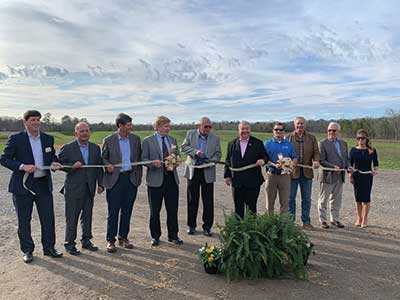
EDC began to invest in retail recruitment and hired Retail Specialist Candice Hill, who is still with the organization today. She has since expanded her role into coordinating the new countywide Grant Resource Center and Leadership St. Clair County program.
Calling the grant center a “tremendous” step in the EDC’s evolution, Bowers said it is eyed as “the biggest move in EDC history.” He views the first 25 years as phases – industry, commercial and now grants, another innovation to EDC’s credit. “It’s the only program set up like that in the state,” Bowers said.
From the smallest of towns to the entire county, they will be able to identify and effectively pursue grants to fill diverse needs with the help this program will provide.
As for the future, Bowers issued a warning. “We need to be careful we do not lose our current recruiter, Don Smith. He is one of the top professionals across the state. We need to keep him and his team in place.”
Judging by the track record and the potential the future holds, Bowers is right when he talks of continuing the momentum. “We need to be planning now what needs to be next. Things are changing. Who would have thought we would go from industry recruiting to grants?”
Smith, he said, is “forward thinking, and he has a great team.”
Looking back, “it took off up in Steele” and evolved into an economic development leader in the state, Bowers said. “It is quite rewarding to be a part of all that.”
What if?
Lyman Lovejoy served on the board at its inception and became its second chairman when Bowers was named to the county commission. In keeping with its original, guiding principle, elected officials cannot serve on the EDC board, and Bowers stepped down.
Lovejoy was in on the ground floor of plans to create the EDC, so he knew full well what to expect as chairman. He remembered the early days when the idea of the EDC was hatched. “There was not a concerted effort around the county to recruit business and industry. Everyone operated on their own.”
If a prospect wanted to look at property in the county, there was not a ‘go to’ person to coordinate although Pell City Realtor Ed Ash was able to successfully locate industries in Pell City early on.
Lovejoy knew the first hire of an EDC director would perhaps be the most important decision they would make. Lovejoy knew of the reputation of Ed Gardner Sr., who served at the Alabama Department of Economic and Community Affairs as director and before that, assistant secretary of Housing and Urban Development in Washington. He was an early advocate for Gardner in the position.
The questions Lovejoy had were, “Would he come? Can we afford him?”
The answer to both were yes, and Lovejoy’s conclusion was simple: “Boy, did we hit a homerun.”
Gardner had the knowledge, expertise and the contacts that quickly moved St. Clair into a leading contender as prospects considered Alabama for new locations or expansions.
“We knew it was a good thing for St. Clair County” having two interstates, railroad spurs, industrial sites and a workforce pool, and EDC began to capitalize on the county’s assets. “We started building on that,” Lovejoy said.
The Saks Fifth Avenue distribution center came. So did Yachiyo. Red Diamond moved to Moody. Dozens more from around the region, across the state and around the world would follow over the next 25 years.
It was a success story played and replayed, just like Lovejoy’s own pitch about St. Clair County. “I love my county, and I love telling its story.”
Continuing the legacy
Joe Kelly, too, was on the ground floor of EDC’s creation, serving as a member of the charter board. “I’m the last of the originals,” he said. “I had some vision of what it could be but nothing like what’s come to pass.”
He now serves as chairman of the board, a post he has held for the past five years.
Originally, the primary focus was industrial recruitment, he said. The vision expanded with the needs, focusing on retail and quality of life issues, too. “It has evolved into how can we affect the health, wealth and quality of life in the county?”
To get to this point, they had to ask themselves, “Can cities, towns and neighborhoods work together? Is it possible? How do we go about it? It’s remarkable the way it developed into that. The quality of the directors affected that a lot. Still does today.”
The county commission, Kelly said, working with cities and towns became “the glue. Without it, I’m not sure it wouldn’t fragment.”
An important challenge was leveling the playing field, but it was critical to the triumphs over the years. EDC has a working knowledge of cities and towns across the county. “It doesn’t play one against the other,” and as a result, “St. Clair EDC is the envy of a lot of different governments in the state and frankly, nationally and internationally.”
Kelly also talked of the promise of the Grant Resource Center. Grants are available, but communities must know about them and go through an often times tedious process without the expertise or manpower. “Why should towns go through all that when the EDC can be involved?,” he asked.
With guidance from the county commission, EDC has stepped up in that role. It is yet another compelling example of putting the EDC to work to fill needs in the county that have gone unmet. It’s a legacy of putting the right people in the right place at the right time and working together to make extraordinary feats happen.
“I’m proudest of helping identify and bring on board people we have had. The quality of the staff – those four people do a lot of work, good work. Our three executive directors all have been superstars. It has been an honor to serve on this board for 25 years and an honor to serve as chairman.”
Its chairmen have been another key component of this legacy of success.
















